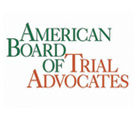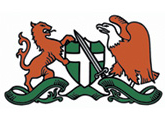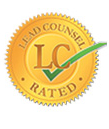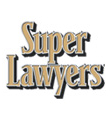A side-impact collision often happens due to another motorist's negligence and can result in life-altering and debilitating injuries. If you are involved in a car accident, you are entitled to seek compensation from the defendant. However, determining fault and filing a personal injury claim is not as easy as it seems. That is why you need an experienced attorney from Los Angeles Car Accident Attorney by your side. For many years, we have recovered millions of dollars for Los Angeles car accident victims.
What is a Side Impact Crash?
Also known as a broadside or T-bone car accident, a side impact accident happens when a car hits another from the side. Often, these crashes cause severe injuries or even death. When an automotive strikes your motor vehicle in the rear or front, there is a lot of feet of space between the body and the car's outside. The hood, trunk, and bumpers area offer a buffer between a car's occupants and the point of impact. However, when a T-bone accident happens, there is only the window and door between you and the impact.
A perfect example is when a driver drives through a red light into an intersection, and other motorists are lawfully passing perpendicular to their position, the driver can cause a broadside accident and is negligent.
According to the National Highway Traffic Safety Administration, there are approximately ten thousand deaths caused by T-bone crashes annually in the U.S.
Determining Fault in a Side Impact Car Accident
Fault in T-bone collisions is founded on negligence. The negligent motorist is accountable for the damages the other driver and passengers suffer due to the accident. In California, negligence is established using the following elements:
-
The defendant owed the alleged victim a duty of care.
-
The defendant breached the duty of care by acting negligently.
-
The defendant's negligence played a significant role in causing the alleged victim's injuries.
The duty of care for driving requires:
-
Use of reasonable care when driving
-
Looking out for other vehicles, obstacles, and pedestrians
-
Regulating the movement and speed of the motor vehicle
Most T-bone car accidents happen at intersections with a traffic control device, and the following are parties with potential fault:
The Other Motorist
At least one of the drivers will be responsible for the collision in a T-bone crash. Motor vehicles shouldn't cross an intersection at right angles simultaneously. Some of the factors that might have caused the driver to enter the intersection wrongfully include:
-
Speeding — Even if a person is driving ten mph over the speed limit, slowing down requires responding fast. Otherwise, the driver will cause an accident.
-
When a motorist turns right during a red light — It is lawful for a driver to turn right on a red light unless posted otherwise. However, when a motorist makes a right turn without leaving adequate space to prevent an accident, that driver is at fault should an accident occur.
-
Turning left during a red or yellow right — A motorist trying to make a left turn at an intersection can enter an intersection provided they have adequate space to complete the turn before causing an accident. If you are hit by a driver who failed to yield to red or yellow light, that motorist could be at-fault.
-
Failing to yield — Giving the right of way is a traffic law violated by most drivers in T-bone crashes. It also includes failing to yield to oncoming cars when making left or right turns, not complying with the rules of proceeding at a four-way stop, and failing to stop at stop signs.
-
Driving under the influence of drugs or alcohol — Reaction time, judgment, and vision is impaired when a driver is drunk.
-
Distracted driving — If a motorist is tending to a child, eating, texting, or eating, their mind, hands, and eyes are off the wheel and might not realize that they are about to cause an accident.
Road Designers and Engineers
Road designers and engineers can be held accountable for a T-bone collision if there are:
-
Inappropriate signaling
-
Poor sight-lines
-
Confusing layout
Car Manufacturer
Imagine approaching an intersection, and your brakes fail. Or your motor vehicle suddenly comes to a stop at an intersection. If a side impact accident follows due to mechanical failure, then the automotive parts manufacturer should be held accountable.
To recover compensation, you should file a product liability claim and prove the manufacturer sold a defective car or component.
What Happens When You Partially Caused Your Side-Impact Accident?
In a traffic collision where more than one party is accountable for the accident or not sure who is responsible, the injured party could still recover compensation. Per California comparative fault rule, your damages will be reduced based on your percent of the liability.
Sometimes, you can be well-thought-out to be careless even if you didn't cause a car accident. For instance, it could be an affirmative defense for the defendant to claim that you did not have a seat belt.
You could be negligent if:
-
You had a functional seat belt,
-
A reasonably cautious individual in a similar situation could have worn the seat belt,
-
You did not use the seat belt, and
-
Your injuries could have been less serious or even avoided if you wore the seat belt.
Determining fault and negligence in a side-impact collision is complex, mainly when every party tells a different story. Speak with your attorney about the case to know what damages you are entitled to.
Proving Liability in a Side Impact Crash
Sometimes driver negligence is obvious on the grounds of how the accident took place or the responsible driver admitted fault. However, in cases where the other motor vehicle cuts in front of you that you hit another car or hit yours, the defendant might claim that they had the right of way and that you were responsible.
Steps to Take at the Accident Scene
The steps to take following a T-bone accident are not different from those of any other car accident.
Contact the police. The police will draft a police report and make a preliminary determination on the accountable persons. For instance, if the other driver was drunk, this might be substantial evidence for who to blame for your accident. Additionally, the police report will have detailed information about the accident, like witness statements, skid marks, location of damage to the motor vehicles involved.
Moreover, collect contact details of witnesses, don't admit liability, and capture photos of the damage, accident scene, and injuries.
Traffic Signs
If there may be an issue about the traffic light, take note of when your accident took place. Although not an effective tool, depending on the case circumstances, it is possible to compare that time against the traffic light's automated programming.
What are the Common Injuries Sustained in T-Bone Crashes?
Numerous factors can influence the kind of injury you sustain in the T-bone car accident. They include:
-
Position in your car — Your position in the car can significantly affect the form of injury you sustain. Generally, those on the struck side are seriously injured when the door panel hits them. On the non-struck side, the injured individual often strikes the person seated next to them, and the front door's pillar with their head.
-
The victim's age — Children at an increased risk of suffering from severe injuries in a side-impact crash even in a low-speed impact accident compared to adult victims. According to a study conducted by Kristy B. Arbogast, Elisa K. Moll et al., children younger than four years represented twenty-five percent of those severely injured. While children between five (5) and nine (9) represented nineteen percent, those between ten and fifteen represented twenty-seven percent.
-
Use of restraints — Most minors who are seriously hurt are not well restrained. Many use adult lap belts without using the right booster seats for their weight, height, and age. For adult passengers, failing to use seat belts increases the likelihood of suffering severe injuries or fatality in a car accident.
Common injuries include:
-
Fractured bones — Due to your car accident's impact and speed, you are likely to suffer broken bones, knees, and elbow injuries. You can also sustain herniated disc injuries, spine and joint injuries, and broken limbs.
-
Brain injuries — Traumatic brain injury is an impact injury to your brain. It occurs unexpectedly or suddenly, and the impact causes the head to be thrown and hit by substances in the car. It can damage your brain's soft brain tissues, cause bleeding and bruising of your brain, or permanent damage to brain cells.
-
Spinal cord injury (SCI) — A spinal cord injury is an injury to your spine. A spine is a tissue and bone structure that forms the center of your nervous system and transmits messages from the brain to the different parts of the body. An injury might include damage to at least one vertebra, disc, or to your spinal cord. An SCI can be severe or mild, depending on the structure injured and the level of damage.
-
Whiplash — A whiplash injury occurs when your head moves violently back and forth while your body stays in place. Often victims undergo a lifetime pain and permanent limitation in their activities. Its symptoms include dizziness, headache, pain in the hands, arms and shoulders, a reduced capability to bend or turn, and lower back challenges. These symptoms might not be apparent immediately after the T-bone accident. Therefore, it is essential to seek medical treatment.
-
Wrongful death — People who suffer from severe burns, internal organ damage, and head injuries are likely to succumb to the T-bone car accident. If you have lost a family member, you should act fast to protect your rights. It is because wrongful death cases can be complicated, and there are several things to consider when dealing with the consequences of the accident. While the defendant might deny fault, their insurer might even claim that your loved one was responsible for the accident. Damages awarded in wrongful death claims include loss of future earning capacity, loss of consortium, and funeral costs.
-
Internal organ damage — It is hard to detect internal organ damage following an accident. Blood loss originating from internal organ injuries can affect some of the vital organs and lead to death. An accident victim might not realize how severe the injury is after the T-bone collision. That is why it is wise to seek immediate medical care even after sustaining a minor injury.
How to Report Your Side Impact Accident
The law requires all motorists involved in the crash to report the accident to the local police or California Highway Patrol within twenty-four hours of the accident if there was death or injury.
You are also required to file a report with the Department of Motor Vehicles within ten days after the collision. You should bring the report if:
-
There were injuries (even a minor injury counts) or fatalities, or
-
The value of the property damaged was more than seven and fifty thousand dollars.
There is no California law about reporting your accident to the insurance provider, but your insurer will need it. The insurer will require reporting immediately. Otherwise, your claim might be denied.
According to most insurance providers, a reasonable time is between 24 and 48 hours following the T-bone accident.
You might think that since the accident was a fender-bender with minor damage or scratches to the motor vehicle and you have no injury, the accident is best handled without involving the insurance provider. Well, that's a risky decision and here are the reasons:
-
Some injuries do not manifest immediately — If a person was involved in a low-speed accident, they might feel a jolt only to discover they experienced whiplash injuries days later. The medical expenses might not be compensated if the crash was not reported to the insurer.
-
The motor vehicle could have invisible damages — A person could think it was a tiny scratch only for the mechanic to report the car has more problems underneath that the car owner did not see when they inspected the vehicle at the scene of the accident.
-
The other motorist's vehicle may have invisible damages — Should the other motorist discover more damage to their car, your insurer might not defend you if you did not report your accident.
-
The defendant can change their mind — You might have entered into an arrangement with the defendant, exchanged contact details, agreed that they would pay losses incurred without insurance provider involvement. Even if all parties had the best intentions of following through, there are many reasons why the defendant could change their mind. The defendant's insurer could also make a claim against your insurance firm.
Calculating Your Total Claim Damages
If you are injured in a car accident, you'll be required to determine the total amount of losses incurred. Often this is immediately following the accident or when an insurance firm steps in and attempts negotiating a settlement with you.
Well, there is no specific formula or method for determining the total compensation amount. Instead, the following factors are used:
-
Comparative fault- Depending on how the accident took place, the defendant insurer can blame you for the accident. As previously mentioned, your compensation amount will be reduced by your percentage of liability in the collision.
-
The degree of physical injuries resulting from the accident involves the determination of the amount of money spent and will be spent to treat the injuries. Moreover, it is paramount to prove how the injuries affect your ability to work and cause emotional distress.
Damages awarded in side-impact accidents include both economic and non-economic compensatory damages. Economic damages are damages that have a dollar value, while non-economic damages are hard to assess and quantify. Common compensatory damages you are likely to recover include:
-
Lost income
-
Lost earning capacity
-
Medical costs
-
Property damage
-
Loss of consortium
-
Pain and suffering
You can also be awarded punitive damages in your case under Civil Code Section 3294. Also known as exemplary damages, punitive damages are awarded when a defendant acted with malice or was extremely reckless. Unlike compensatory damages, punitive damages serve to punish the defendant for their conduct as well as discourage other drivers from behaving similarly in the future. When granted, punitive damages are in addition to your compensatory damages amount.
Why You Need an Experienced Personal Injury Attorney in Your Side Impact Car Accident
Your injuries might not have recovered before you begin receiving calls, bills, and requests from your doctors, insurance provider, and police. It is when you need to focus on your recovery and might feel stressed and overwhelmed by how you're going to foot the expenses incurred. An attorney can be instrumental.
The attorney can help you receive financial compensation for your injuries, medical bills, pain and suffering, emotional distress, and lost income. Moreover, they will:
Explains Your Rights
Your experienced attorney will tell you how the accident and various legal issues impact your constitutional rights.
Offers Legal Advice
The lawyer will walk with you throughout the process. This will help you understand the complex legal procedure, interpret insurance and medical jargon, and know the necessary paperwork.
Your counsel will recommend seeking immediate medical attention to prove the link between your injuries and the side-impact car accident. Another advice provided is not to give the defendant's insurer a statement since it could be used to deny accountability.
Opinions given by the attorney about the case are objective. It helps you make informed decisions that are not motivated by frustration, fear, stress, or anger.
Represents You in Court
Many personal injury claims do not proceed to trial. However, should the insurance provider deny your claim, the only way you receive compensation is through trial in court. Litigation is complicated and requires adherence to rules of proof and proper procedures, a task only a skilled attorney can handle best.
Conducts Professional Investigations
Your attorney will interview witnesses, investigate the T-bone accident scene, and come up with theories about how the accident happened. The attorney can be a retired police officer or prosecutor and is well-versed with the judicial system.
Expert witnesses like collision reconstruction experts could be essential if your accident liability is a bone of contention. The lawyer knows who can help them build your case.
Assesses Your Damages
Like most car accident victims, you might only worry about the immediate aftermath of the accident. It could be because you could be getting harassing calls from bill collectors, require your car repaired and makeup funds after being away from work for a couple of weeks.
Your personal injury attorney has previously handled similar cases and could give an accurate evaluation of your injury's long-term and real effect, like future medical bills and loss of earning capacity.
Can You File a Personal Injury Claim If an Uninsured Motorist Caused Your T-Bone Accident?
The law requires all motorists to have minimum car insurance coverage. Additionally, insurance companies are required to offer uninsured and underinsured motorist coverage. Nonetheless, this coverage is optional.
In the U.S., uninsured motorist insurance pays compensation when another motorist is accountable for the collision but is not insured. Underinsured motorist insurance pays for damages when another motorist's insurance policy doesn't offer adequate coverage to cover for all damages.
If an insured or underinsured driver hurts you, you may have to bring your claim against the defendant (personally). Nevertheless, most uninsured drivers don't have a lot of assets or money to pay for medical expenses, among other accident damages.
Find a Skilled Car Accident Lawyer Near Me
A T-bone car accident is one of the most catastrophic accidents and causes a significant number of fatalities. It is because a vehicle's side panels are areas with the least safety features. As a result, the injuries require extensive and expensive medical attention, not forgetting it requires you to take time off work. You don't have to undergo these challenges when a negligent person caused your accident. The experienced attorneys at the Los Angeles Car Accident Attorney can investigate the cause of the accident and help you recover the compensation you deserve. To schedule your initial free consultation, contact us today at 424-237-3600.






